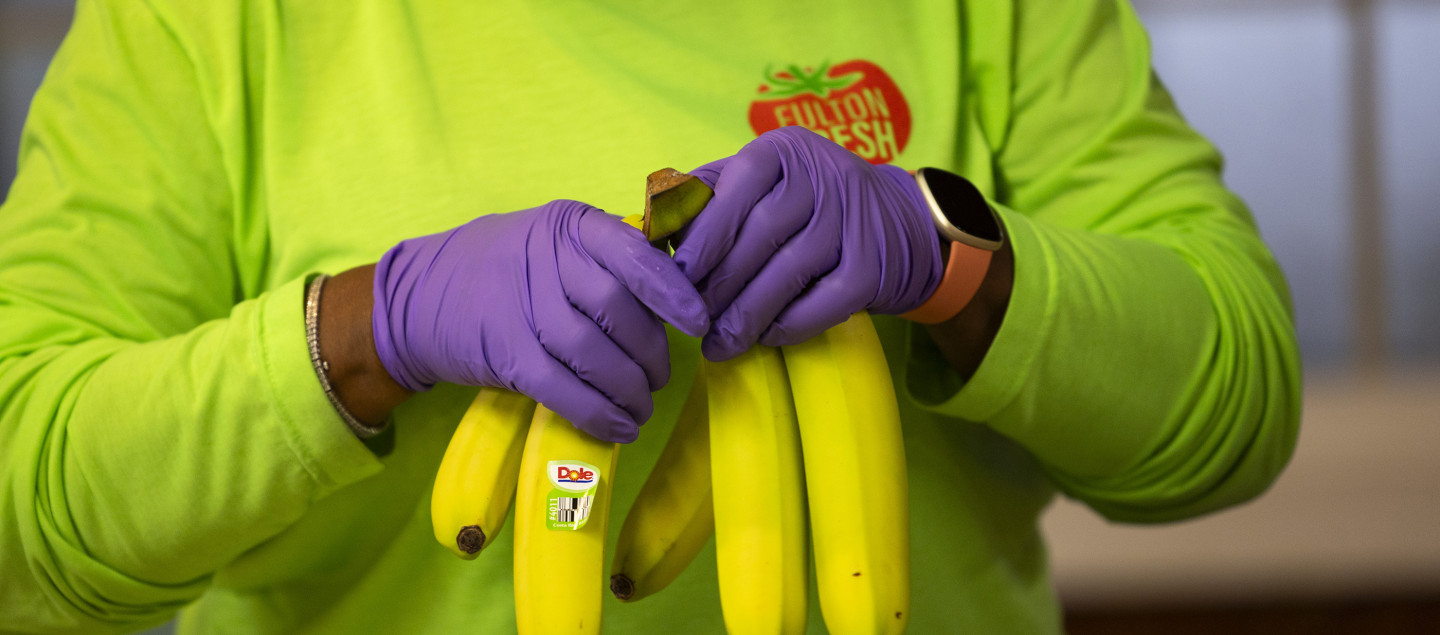Hunger Study addresses gaps in food assistance programs

Food insecurity, indicated by a lack of consistent access to nutritious foods, continues to affect Georgia families and poses unique obstacles to charitable food assistance programs trying to address the need.
The 2023 Georgia Hunger Study, conducted by an interdisciplinary team of University of Georgia researchers in collaboration with the Georgia Department of Human Services and Feeding Georgia, found that 79% of households utilizing charitable food agencies reported experiencing food insecurity.
Using geospatial mapping, surveys and focus groups to assess challenges facing food insecure Georgia families, researchers found that 57% of clients who visit food pantries hold jobs, but don’t make enough money to pay for essential needs.
This results in families having to choose between buying food and other necessities like rent, utilities and medicine.
“Food insecurity is a growing public health problem with critical nutrition and health implications,” said Jung Sun Lee, principal investigator of the study and Georgia Athletic Association Professor in Family and Consumer Sciences. “Many food insecure households in Georgia rely on charitable food assistance, such as food pantries and soup kitchens, to meet their food needs. However, no established methodology and datasets are available to document the current availability, accessibility and utilization of charitable food assistance programs.”
In addition to the client surveys, the study included a statewide survey of all charitable food assistance programs. Researchers identified and cataloged 2,404 charitable food agencies and programs statewide.
Using geographic information system (GIS) mapping, researchers found several “cold spots” in northern sections of Atlanta and smaller sections of middle and South Georgia where distance between agencies from eligible populations contributed to food insecurity.
“While maps never tell the whole story, identifying potentially underserved areas can be immensely valuable for regional food banks and local agencies as they develop plans for local outreach,” said Jerry Shannon, co-principal investigator and faculty with dual appointments in FACS and in the department of geography in the Franklin College of Arts and Sciences.
Researchers also conducted statewide surveys of more than 900 food bank partner agencies and 1,746 clients and held focus groups with agency staff or volunteers representing 39 Georgia counties.
Their findings highlight multiple challenges facing clients, such as lack of transportation and limited availability of healthier foods.
A statewide provider survey found food agencies also face challenges ranging from limited infrastructure for storing and distributing food, securing resources and personnel and difficulties increasing awareness and engagement with eligible clients.
Coordination between local agencies was also hampered by tight resources and a lack of system-wide information.
Only about 20% of the agencies provide application assistance for programs like Supplemental Nutrition Assistance Program (SNAP) benefits, which clients identified as a barrier. Only 25% of providers offered nutrition education.
“The focus group discussions revealed the diversity represented in each of the nine food bank regions in Georgia,” said Abigail Borron, co-principal investigator on the study and associate professor in the UGA College of Agricultural and Environmental Sciences. “While the staff and volunteers continually agreed that there cannot be a one-size-fits-all approach to addressing food assistance needs, they did consistently recognize the need for more enhanced and streamlined communication efforts to share ideas and discuss resource needs within and among the regions.”
Researchers recommended improved standardization and collaboration among the nine regional food banks to better understand the statewide network and address gaps, noting the creation of a statewide agency and program list is feasible and should be a priority.
The team also recommended improving geographic access to food assistance.
In addition, researchers recommended agencies prioritize the use of the U.S. Department of Agriculture’s Emergency Food Assistance Program (TEFAP), which helps provide free emergency food assistance and improved SNAP outreach.
Georgia Hunger Study team members from UGA are Lee, Alison Berg and Abigail Klinker in the department of nutritional sciences in the College of Family and Consumer Sciences; Shannon and Maya Rao from the department of geography in the Franklin College of Arts and Sciences; and Borron and Jiyea Park from the College of Agricultural and Environmental Sciences; in addition, 13 Family and Consumer Sciences Extension agents supported recruitment for the statewide survey.
Below:
Maps of proximity to public-facing food assistance in Georgia. Proximity score (left) shows overall proximity of agencies, while the proximity gap (right) shows where agencies are closer/farther than expected based on population density.



In this category: Nutrition
-
Best by vs. sell by: UGA food safety expert explains expiration dates
UGA Extension food safety specialist said most dates indicate peak quality rather than safety

-
Search for safe seafood broth recipe in the works
Researchers see opportunity to leverage seafood as an alternative or complementary food source

-
Interested in the vegetarian lifestyle? Here are a few tips
Faculty member Emma Laing offers advice on how to make the transition smoother
